Community Building Just About Anyone Can Do
http://decor-ideas.org 11/11/2013 22:50 Decor Ideas
Whether you live in a diverse urban neighborhood or a quiet, tree-lined suburb, connecting with your neighbors to build a sense of community can be difficult. It's easy to blame the people who live around you — or even yourself — but the cause is often bigger than that. Sometimes it's the neighborhood itself and its lack of public space that prevent you and others from connecting.
Here we'll show you how to change your neighborhood to create a sense of community.
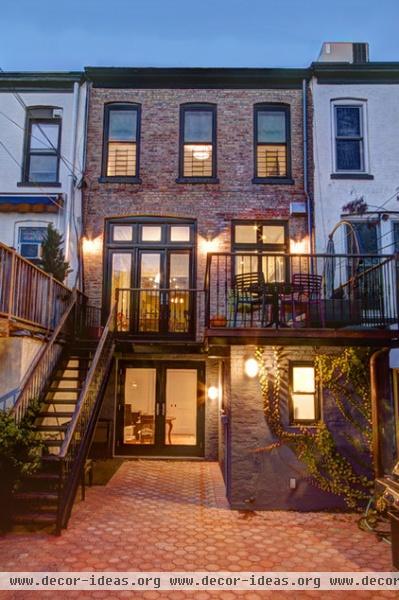
The Importance of Public Spaces
Public spaces allow neighbors to socialize and connect, whether they're playing with their dogs at a beach, watching children's soccer games at a field or playing chess at tables in the park. "You share your streets, your parks, your sidewalks with your neighbors," says Brendan Crain, communications manager at Project for Public Spaces. "You're bumping up against each other and interacting. That builds community."
A lack of usable public space limits opportunities to meet other people in the community. But if that's the case in your neighborhood, the good news is that there's a simple solution: defining or building public spaces based on your neighborhood's needs.
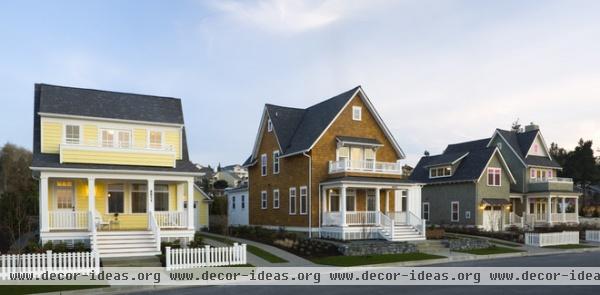
Placemaking
The more useful, relevant public spaces that exist, the more likely it is that people will use them together. That leads to shared moments and relationships.
Urban planners often refer to this process as placemaking. It's based on finding and developing a neighborhood's collective vision for a public space. Placemaking reexamines everyday spaces — streets, sidewalks, empty parking lots — through the eyes of the people who use them every single day. But does it work?
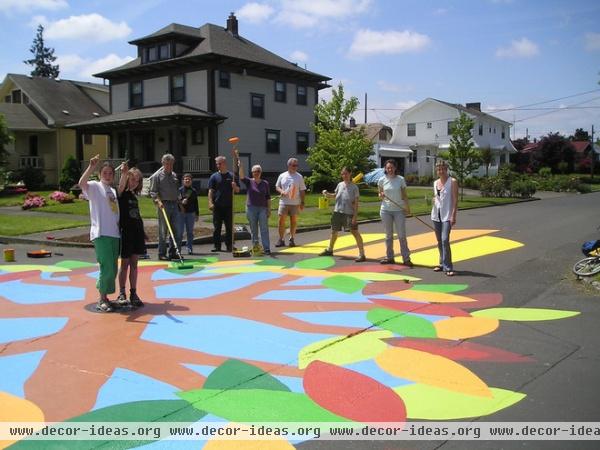
Many organizations across the United States have brought the idea of placemaking to neighborhoods. In Portland, Oregon, City Repair gathers groups of residents to build around or beautify dilapidated intersections. Sometimes they paint the street, turn an empty lot into a garden or set up a free library. The colorfully painted intersection here, in Portland's St. Johns neighborhood, has beautified the street and encourages drivers to slow down.
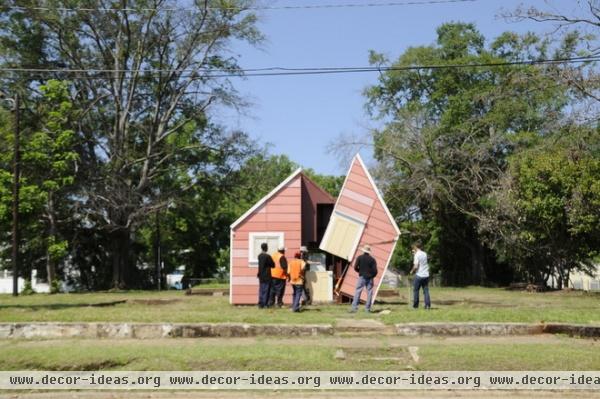
Without a public gathering space, the citizens of York, Alabama, felt disconnected from one another. Artist Matthew Mazzotta worked with the town to turn a dilapidated old house into a new unfolding outdoor theater where the entire community can congregate.
See more about this project
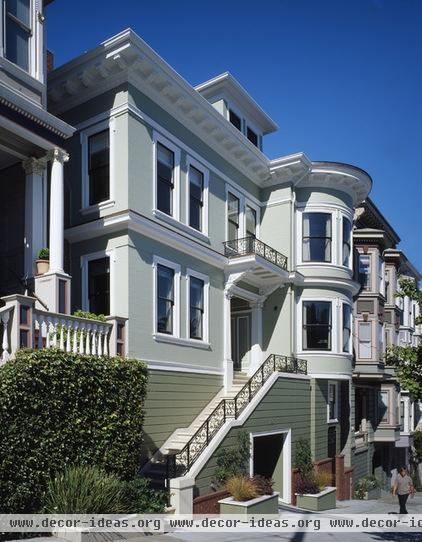
Temporary Placemaking
Of course, there's a difference between seeing the need for a public space and having the ability to create it. Raising money and going through local government channels can seem intimidating, so many residents implement temporary placemaking ideas.
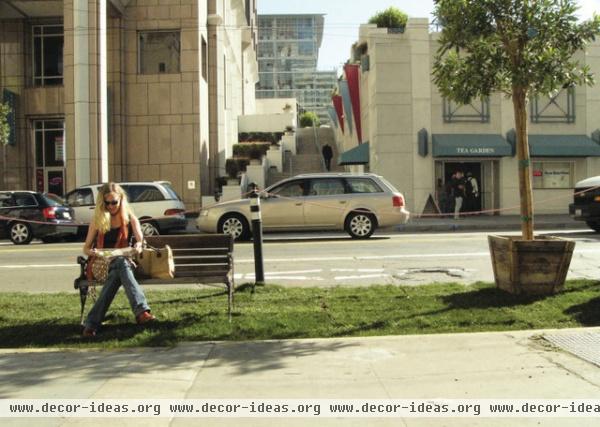
Park(ing) Day is one example. It started in San Francisco but has spread to cities around the country. Every year on September 19, people around the U.S. put quarters in local parking meters, reserving spaces all day and creating little parks for people to enjoy. The concept shows what can be done with existing street spaces and alternative ways people can use them.
In San Francisco the program has resulted in the development of parklets across the city through the Pavement to Parks program.
See more parklets in our Design Lover's guide to San Francisco
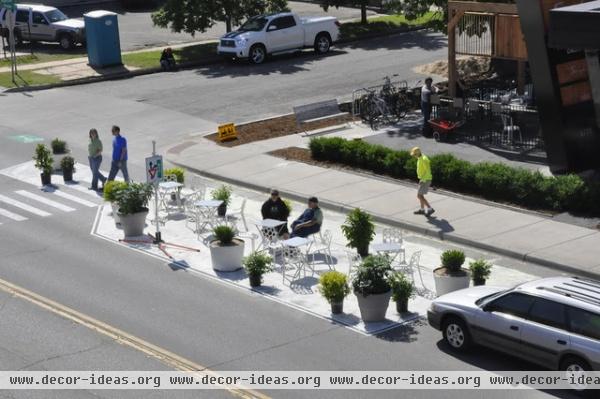
The Better Block, based in Texas, reinvents public streets into an event or gathering space for a single weekend, highlighting its potential for residents and local lawmakers. Here an empty stretch of street in Wichita, Kansas, became a modern parklet with a bike path.
Calling attention to a public space reveals the need to improve it. This doesn't have to involve a ton of work, either: Placemaking can mean things like having a knitting club meet in an underdeveloped park, throwing a concert in the street or hosting a small craft fair in a quiet alley. "This is especially effective in areas that are underutilized," says Brendan Crain of Project for Public Spaces. "Even if it's an awkward fit, you're calling the community's attention to it."
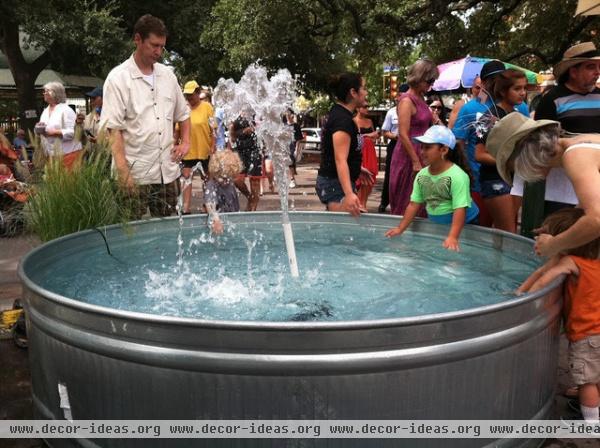
What You Can Do
Take some ownership of your neighborhood. Placemaking helps residents realize that they have the ability to create and shape the place where they live. "There's something powerful about caring for the public realm," says Maria Rosario-Jackson, a specialist in urban planning and a senior research associate at the Urban Institute. "There's the responsibility of caring for something greater than yourself."
Start small. Maybe your vision of a new park isn't possible yet, but you can help your neighbors see how great it would be by hosting a neighborhood kids' play day on your front lawn.Do something temporary. Experiment before making any permanent changes. You don't need to bring out the bulldozers just yet — see if your concept catches on first. Mow that meadow and host a few impromptu soccer games, put a couple of Ping-Pong tables in an alley or set up a few food tables near that dilapidated street. If it works, you'll have a motivated group of people to help make your dream a permanent reality.Bring your life out to the streets. Placemaking doesn't have to involve anything out of the box. Just bring one of your daily passions or habits outside. This could be something like cooking, playing games, playing music (quietly) or even working around a Wi-Fi hotspot.Find a leader. "An important part of creating a community is leadership," says Rosario-Jackson. "Find a community leader to help create a culture of participation."Communicate. Don't let motivation or connections fade. Share ideas and stay in touch with a Google Group or the neighborhood-based social network Nextdoor.Learn more about placemaking at the Project for Public Spaces
Tell us: Do you see a way it to make your neighborhood a stronger community?
More: Book It: Bring a Mini Library to Your Front Yard
Related Articles Recommended












